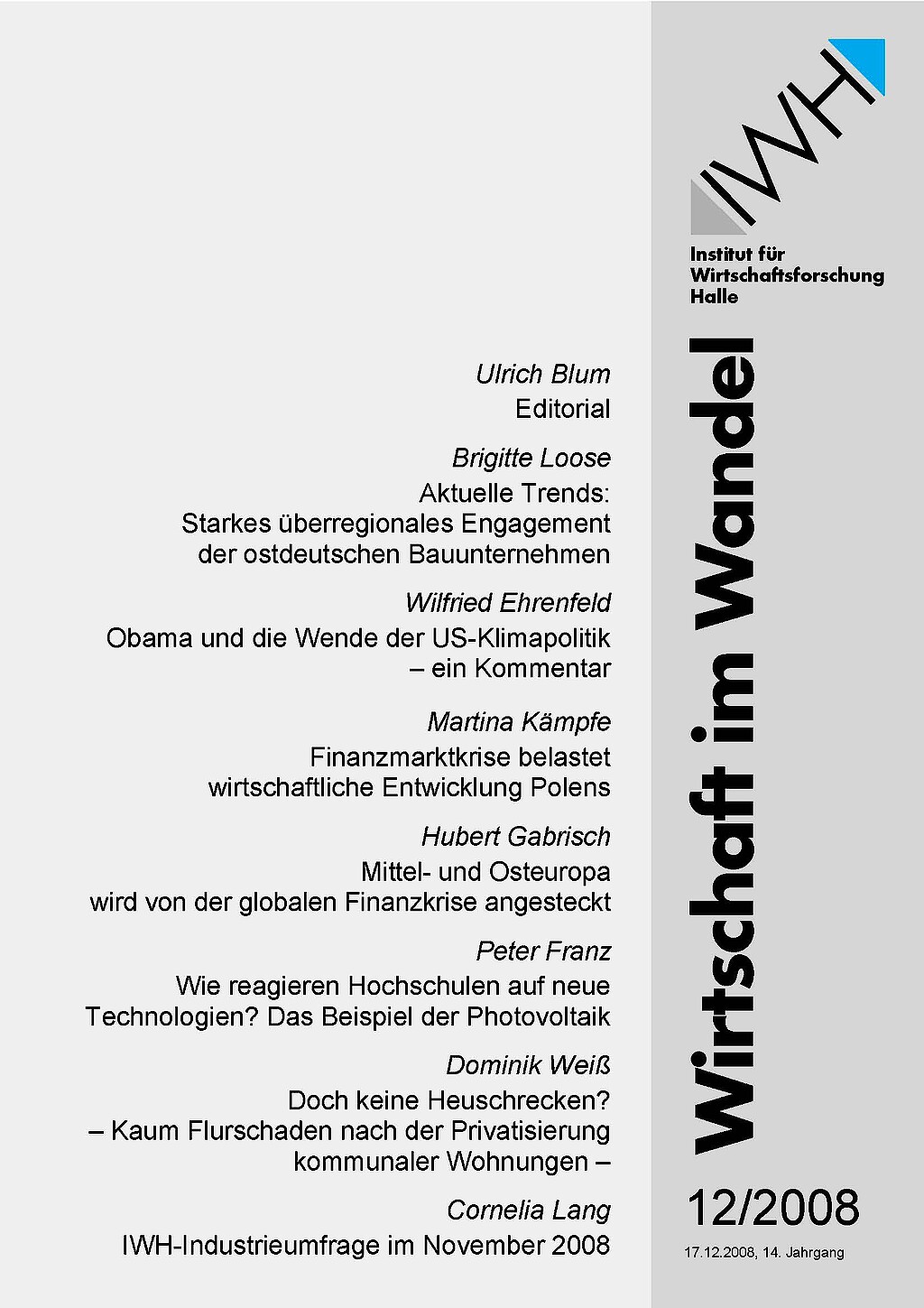
Crisis Contagion in Central and Eastern Europe
Die mittel- und osteuropäischen Länder sind nunmehr auch von der globalen Finanzkrise getroffen. Erstens hat der Verfall der Rohstoffpreise (Öl und Stahl) in Russland und in der Ukraine zu Rezessionsängsten und damit zu einem Abzug kurzfristigen Kapitals geführt. Für alle Länder kommen die Auswirkungen der weltweiten Nachfrageschwäche über den Exportsektor negativ zum Tragen. Schließlich erweist sich der von ausländischen Banken dominierte Finanzsektor in fast allen neuen EU-Ländern als Einfallschneise für Risikoanpassungen internationaler Investoren. Die gemeinsame Folge dieser Faktoren sind zunehmende Einschränkungen der Kredit- und der Geldversorgung und ebenfalls ein Abzug von Investitionskapital. In der gesamten Region zeichnet sich eine starke Abschwächung des Wirtschaftswachstums ab, in einigen Ländern droht sogar eine langanhaltende Rezession. Es ist vorwiegend Aufgabe der Fiskalpolitik dieser Länder, Dauer und Tiefe der Rezession zu mildern. Eine Fortsetzung der bisher verfolgten fiskalischen Konsolidierung oder gar des Konvergenzkurses für einen schnellstmöglichen Beitritt zur Eurozone ist derzeit nicht sinnvoll. Eine staatliche Stützung der Nachfrage sollte durch die Stärkung eines genuin inländischen Bankensektors begleitet werden, der die Sicherung der Kreditversorgung zum Ziel hat.




